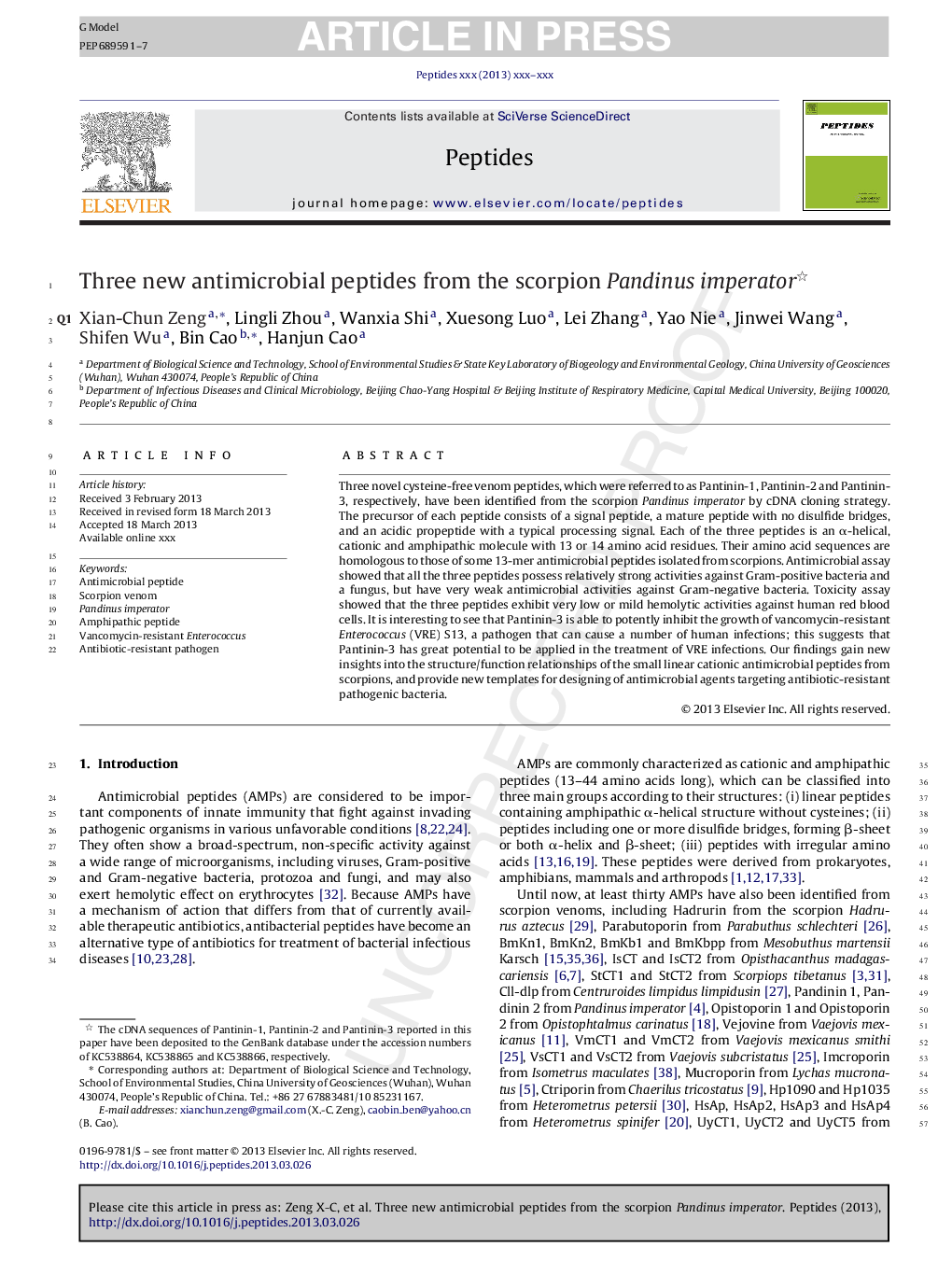| Article ID | Journal | Published Year | Pages | File Type |
|---|---|---|---|---|
| 8348664 | Peptides | 2013 | 7 Pages |
Abstract
Three novel cysteine-free venom peptides, which were referred to as Pantinin-1, Pantinin-2 and Pantinin-3, respectively, have been identified from the scorpion Pandinus imperator by cDNA cloning strategy. The precursor of each peptide consists of a signal peptide, a mature peptide with no disulfide bridges, and an acidic propeptide with a typical processing signal. Each of the three peptides is an α-helical, cationic and amphipathic molecule with 13 or 14 amino acid residues. Their amino acid sequences are homologous to those of some 13-mer antimicrobial peptides isolated from scorpions. Antimicrobial assay showed that all the three peptides possess relatively strong activities against Gram-positive bacteria and a fungus, but have very weak antimicrobial activities against Gram-negative bacteria. Toxicity assay showed that the three peptides exhibit very low or mild hemolytic activities against human red blood cells. It is interesting to see that Pantinin-3 is able to potently inhibit the growth of vancomycin-resistant Enterococcus (VRE) S13, a pathogen that can cause a number of human infections; this suggests that Pantinin-3 has great potential to be applied in the treatment of VRE infections. Our findings gain new insights into the structure/function relationships of the small linear cationic antimicrobial peptides from scorpions, and provide new templates for designing of antimicrobial agents targeting antibiotic-resistant pathogenic bacteria.
Keywords
Related Topics
Life Sciences
Biochemistry, Genetics and Molecular Biology
Biochemistry
Authors
Xian-Chun Zeng, Lingli Zhou, Wanxia Shi, Xuesong Luo, Lei Zhang, Yao Nie, Jinwei Wang, Shifen Wu, Bin Cao, Hanjun Cao,
